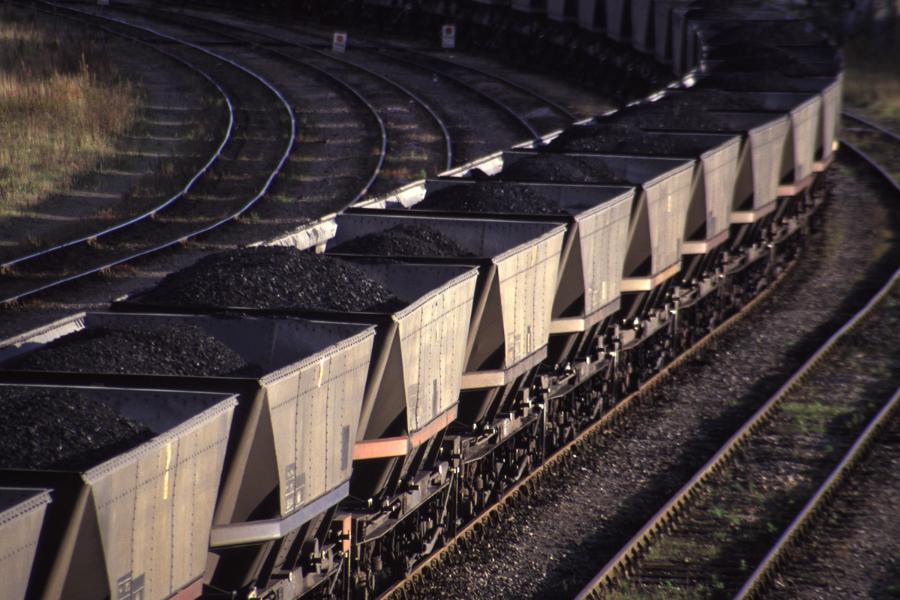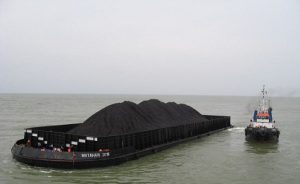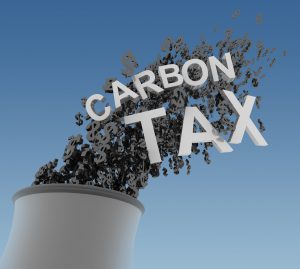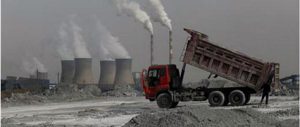In a press release reporting its first quarter 2012 financial statement, Peabody Energy, the world’s largest private coal company, enthused about its glowing future exporting American coal: “In the United States, Peabody has the leading position in the two regions with the best demand growth potential and the lowest cost structure – the Powder River and Illinois basins.”
Translated into simple words, this means that there is a lot of coal in the Powder River Basin. The coal is easy to mine, and it costs nearly nothing.
With their collective corporate eyes focused on a vision of windfall profits from the rapidly growing worldwide coal market, Peabody Energy, Ambre Energy, Arch Coal and Cloud Peak Energy, major players in the Powder River Basin coal fields of Wyoming and Montana, are poised to export vast quantities of coal from proposed ports in the American and Canadian north-west. Major target markets of their export planning are China and India.
“Peabody expects China’s coal consumption to grow by more than 1 billion tonnes by 2015, to approximately 5 billion tonnes per year,” continues the press release. “In India, approximately 70 gigawatts of coal-fuelled generation are expected to start up in the next five years, requiring nearly 250 million tonnes of additional coal, much of which is expected to be supplied through increased imports.”
While corporate plans to ramp up coal exports to Asia are very gradually gaining attention in the media, less well known are the tax breaks and royalty rates – including one tax scheme introduced to reduce greenhouse gas – through which the US and Canadian governments actively encourage and subsidise these high-carbon exports.
US coal is already being exported through Canada’s most western province, British Columbia. Just south of the bustling west coast port city of Vancouver, the Westshore Coal Terminal ships 22 million tonnes of coal a year, of which 59% goes to China. Westshore is profitable, but its exports only scratch the surface of the envisioned market. With increased Asian demand for coal, and a favourable tax environment, the terminal has plans to grow.
In the race to serve Asia’s appetite for coal, other existing British Columbia coal terminals are expanding like Westshore, and half a dozen major new terminals have been proposed for environmentally sensitive areas of the north-west coast of the United States. The proposed increase in size will triple the existing export capacity of the US and make the country the world’s third largest exporter of coal.
Canada’s carbon tax: a break for coal exporters?
Unknown to most taxpayers in the United States and Canada, tax and royalty policies originally intended to benefit the citizens of those countries, now offer the coal industry unspoken subsidies that will almost certainly guarantee big profits for the industry as coal exports grow. While the coal industry has billions of dollars in incentives to dig more coal and dig it faster, taxpayers will shoulder the burden of the massive proposed exports, with little benefit from the profits.
Because it is exporting the coal, the industry has no responsibility for emission standards when it is burned. In British Columbia, the industry will benefit from exemptions from the province’s carbon tax, a tax instituted to reduce greenhouse gases. Signed into law four years ago, this is a tax on gasoline, fuel oil, coal or any other source of carbon dioxide burned in British Columbia.
Not intended as a means to grow a bigger government, the carbon tax is revenue neutral. Dollars received from the tax are used to offset other provincial tax burdens. Consequently, British Columbia has some of the lowest personal and business income tax rates in the western hemisphere. For coal exporters, the business tax rates are attractive. Even as they export coal that will emit an amount of carbon dioxide equal to the emissions of the entire province, they are charged no carbon tax. Export coal is not burned in British Columbia.
While the United States has higher and less attractive business income rates than British Columbia, it offers labyrinthine tax and royalty regulations that effectively subsidise the mining and export of coal.
Of the coal targeted for export, most of it will come from leases on publicly owned lands in the Powder River Basin. A lease is obtained by a “competitive” bid. Rarely is there more than one bidder. Awarded the lease by the Bureau of Land Management at “fair market value”, a high value might equal US$1.10 a tonne.
Concerned over royalty payments and proposed export of vast quantities of coal, US congressman Edward Markey, a senior member of the House of Representatives’ Committee on Natural Resources, requested in a letter that the Government Accountability Office examine federal coal-leasing practices. In April of this year, he wrote, “Federally leased coal now accounts for some 40% of US coal production. Nearly nine out of every 10 tonnes of federally leased coal is mined in the Powder River Basin of Montana and Wyoming.”
An independent report released a few days later by the Institute for Energy Economics and Financial Analysis alleged: “The US Treasury has lost approximately US$28.9 billion in revenue throughout the last 30 years. Despite past political scandals and promises of programmatic reform…”
Once mined from the leased land, the coal is sold. The sale takes place at the mine. In the State of Wyoming, where most of the export coal will be mined, the only tax liability is on the value of the coal at the mine, which works out at US$9 or US$10 a tonne.
Mined coal is considered personal property. It is “severed”. A severance tax of 7% up to a maximum of US$0.60 a tonne is due to the state. Roughly equivalent to the severance tax, Ad Valorem tax is collected by the county in which the coal is mined.
Total taxes less than 3% of coal sale price in Asia
Export coal is exempted from the Federal Coal Excise Tax, a tax intended to cover the cost of the Black Lung Fund for the one in six coal workers who eventually contract the disease.
While in transit to the export terminal, the coal is in interstate commerce and is not taxed. Senior Counsel to the Washington Senate Democratic Caucus, Gary Wilburn reports, “…like other goods that are in interstate commerce moving through the state, the coal would not be subject to the Washington state sales tax. This is the case with virtually all goods in commerce, whether they are bulk commodities or finished products.”
The businesses engaged in transportation or export would be responsible for their business, payroll taxes, property and sales taxes. But the sums would be small compared to the value of the coal. A coal terminal such as Westshore would pay taxes on its income from loading coal on bulk carriers, the profits from a fee of US$9-10 dollars per tonne.
As to income tax, when the coal mined from taxpayer property is profitably sold for US$80-120 a tonne on the international market, there is no obligation to pay those taxes in the United States. A prudent international business will use an international subsidiary to buy the coal at the mine mouth. It could be a subsidiary based in British Columbia, or any country where income tax rates are lower than in the United States.
All told, US taxes equal less than 3% of the sale price of the coal in Asia. For the coal companies and terminal operators, the export of coal from North West terminals will mean multibillion dollar yearly payoffs subsidised by the taxpayer with very little money paid into the public coffer.





